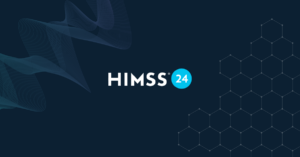The healthcare reimbursement landscape is continuously changing, creating numerous challenges for healthcare organizations as they look to increase revenue. In fact, the revenue risk among not-for-profit and rural healthcare systems are even greater. The National Rural Hospital Association, estimated that 673 rural facilities were at risk of closure, out of over 2,000. West Tennessee Healthcare (West Tennessee), one of the largest, rural, public, not-for-profit healthcare systems in the U.S, acted proactively to combat this trend. In our recent case study, we examine how West Tennessee leveraged analytics to achieve financial success.
West Tennessee has four hospitals, two medical centers and offers 20 primary and specialty care centers. They service a population of 500,000 and with such a large rural patient base, needed guidance to address the following issues:
- 3:1 bad debt to charity ratio
- High percentage of accounts in arrears
- Long lead (30+ days) to denial and appeal process
West Tennessee’s Executive Director of Patient Financial services, Wade Wright, noted that with our help they improved upon the following areas, including:
- Denials workflow and triage – A centralized, efficient denial management approach, allowed them to quickly address denials and overturn accounts.
- Self-pay Analytics – The implementation of a presumptive charity program reduced their bad debt to charity ratio.
- Smart work lists – By creating targeted lists, they could drive efficient workflows and prioritize and segment accounts.
- Self-service data analytics – Meaningful and easy-to-use data tools gave them the ability to shine a spotlight on pain points and obtain the biggest return on investment.
By integrating Patient Access and Revenue Integrity, along with Business Office, West Tennessee had an end-to-end revenue cycle management solution. This helped them to reduce their bad debt to charity ratio to 1:1 and the percentage of accounts in arrears by 3.3 percent. Their billed accounts receivable also dropped by $34.9 million in only four months. By applying our analytics solutions, West Tennessee successfully overcame their revenue cycle management barriers and are better prepared for future healthcare changes.
To read more about our partnership with West Tennessee, click here. You can also download our infographic here. If you’re interested in learning how you can achieve similar results within your organization, request a demo with us: https://medeanalytics.com/request-demo
Get our take on industry trends
Another year, another great HIMSS!
HIMSS24 was a fantastic event, as always. One of our favorite additions this year was the Digital Health Technology Theme…
Read on...Optimize your midcycle for telehealth services
Telemedicine is now a permanent fixture in homes across America. A majority of healthcare organizations have established the technology necessary…
Read on...Three ways to improve patient retention in recovery programs
Deaths from drug overdoses have increased from ~1 per 100,000 in 1999 to ~4 per 100,000 in 2020.1 The introduction…
Read on...ACOs and value-based care in 2024: Four key questions and answers
ACOs have long been at the front lines of value-based care efforts. In a recent LinkedIn Fireside Chat, Andy Dé…
Read on...


